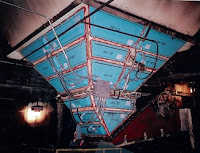In early 2025, the Trump administration enacted a series of executive orders to revitalize the U.S. coal industry. These measures included easing environmental regulations, fast-tracking coal leasing on federal lands, and exempting nearly 70 coal-fired power plants from specific emissions standards for two years. The administration's stated goals are to bolster energy independence, support domestic industries, and meet the rising electricity demands driven by sectors like artificial intelligence and data centers.
Potential Increase in Coal Usage
While these policy changes may provide short-term support to the coal industry, experts caution that the long-term viability of coal remains uncertain. The Institute for Energy Economics and Financial Analysis (IEEFA) reports that many decommissioned coal plants are economically unfeasible to restart due to their age and the high costs associated with refurbishments. Additionally, coal's share in U.S. electricity generation has declined significantly, from over 50% in 2000 to less than 20% today, as utilities increasingly turn to more cost-effective and cleaner energy sources.
Positive Effects on Ancillary Industries
Despite the challenges facing coal's resurgence, several ancillary industries stand to benefit from increased coal activity:
- Coal Mining Operations: Regions like Appalachia and the Powder River Basin may experience a boost in mining activities, leading to job creation and economic growth. For instance, the approved expansion of Montana's Spring Creek Mine is set to extract nearly 40 million tons of coal over the next 16 years, signaling potential growth in coal extraction projects.
- Rail Transportation Networks: An uptick in coal production necessitates efficient transportation. Rail networks, integral to moving coal from mines to power plants, could see increased demand, leading to higher revenues and potential infrastructure investments.
- Equipment Manufacturers: Companies producing mining and processing equipment may experience increased orders as coal operations seek to enhance productivity and comply with safety standards. This demand could spur innovation and expansion within the equipment manufacturing sector.
- Engineering and Maintenance Service Providers: The need to retrofit and maintain aging coal infrastructure presents opportunities for engineering firms specializing in plant upgrades, emissions control systems, and safety enhancements. These services are crucial for ensuring operational efficiency and regulatory compliance.
Hotfoil-EHS: Supporting the Coal Industry's Operational Needs
Maintaining operational efficiency and reliability is paramount in the context of renewed coal activities. Hotfoil-EHS offers a suite of industrial heating solutions designed to address common challenges in coal handling and processing:
- Electric Freeze Protection Systems: Prevent freezing in coal handling equipment, ensuring uninterrupted material flow during cold conditions.
- Fly Ash Hopper Heaters: Maintain optimal hopper temperatures to prevent ash solidification, facilitating efficient disposal and reducing maintenance downtime.
- Electric Conveyor Heating: Keep conveyors operational in low temperatures, preventing material freeze-up and ensuring consistent coal movement.
- Electric Bin Heaters: Prevent coal from freezing in storage bins, ensuring smooth discharge and reducing blockages.
By integrating Hotfoil-EHS's heating solutions, coal-fired power plants and related facilities can enhance operational efficiency, reduce maintenance costs, and improve reliability. This aligns with the industry's need to adapt to regulatory changes and economic pressures.
2960 East State Street Ext.
Hamilton, NJ 08619
Phone # 609.588.0900
Fax # 609.588.8333
www.hotfoilehs.com





